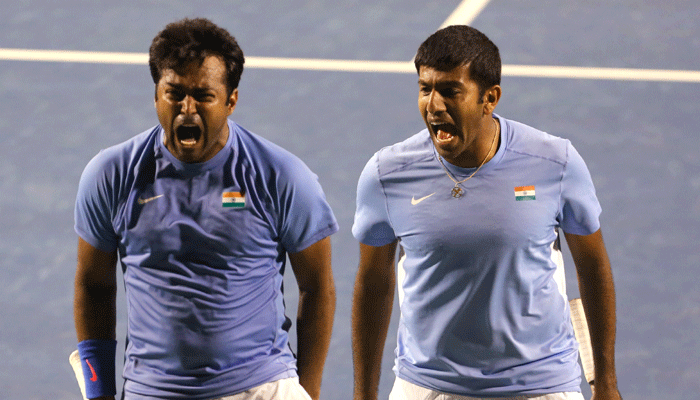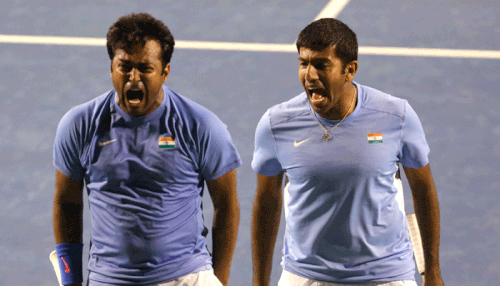
India has plenty to learn from China and Japan when it comes to producing singles tennis champions

Davis Cup woes: A prelude
During the Indo-Serbian Davis Cup tie, when it became apparent that Novak Djokovic wouldn’t be participating in the event, many Indian tennis fans heaved a sigh of relief. Disappointment lingered on account of Djokovic’s absence, but it couldn’t override the hope that India now had a good chance of making it to the World Group again.
But what happened in the tie was completely contrary to expectations as both Somdev Devvarman and Yuki Bhambri lost the opening two rubbers leaving, as always, the responsibility on the doubles team to get a much-needed equalizing win. And even after getting the score-line to within reachable lines of victory, the straight-sets folding in the final rubber by Bhambri was too big a let-down to digest.
Which brings us back to the question – where exactly do Indian tennis players fall short when it comes to playing singles?
Stamina – big problem for Indian players
Recently, Leander Paes visited the Khar Gymkhana at Mumbai, where he spoke at length about the need to add depth in singles play. But as simple as that sounds to read and understand, it’s almost undoable in practicality.
The last Indian player who did well in singles was Vijay Amritraj, way back in the 80s. A natural grass-courter, Amritraj’s game was centred on the serve-and-volley style. In his professional prime, Amritraj not only defeated Bjorn Borg and Rod Laver, but also upset Jimmy Connors, the reigning World No. 1 then.
Amritraj’s successes on the singles front however cannot obscure the fact that at the Slams, he wasn’t able to outlast his opponents whenever the match went on to the deciding set. That shortcoming accounted for his losses on numerous occasions, including the 1979 Wimbledon quarterfinal against Bjorn Borg where he was leading the Swede by two sets to one and 4-1 in the fourth set, only to lose the fifth set – and consequentially the match – 2-6.
Inability to maintain stamina was a major problem with Amritraj back then, and even now, the same problem continues to plague the singles players. This, despite the fact that several Indian players train, not in India, but overseas – where infrastructural facilities are regarded to be distinctly better than the ones offered back home.
Is there a solution to the bleak situation?
Genetics seems to have a big effect on Indian tennis players’ ability to do well in singles. The solution, then, would be to implement certain measures to ensure that relatively weaker genetics, in comparison to Europeans, Americans and even Australians – who always start out as favourites in any tournament – are somehow never brought into the equation.
When Irfan Pathan and Yusuf Pathan spoke at length about the aspects that their newly launched cricket academy would cover, diet and nutrition was a subject that was mentioned a lot. And while cricket and tennis are completely different sports, perhaps lying at opposite ends of the sporting spectrum, dietary and nutritional guidance isn’t a domain that is unique to cricket alone.
In India, there needs to be a better way of incorporating dietary and nutritional counselling right at the onset for children taking up tennis. This way, they would be better equipped for playing the game with more stamina and physical sustenance as they grow older, especially when it comes to performing at the highest of the sport’s platforms.
China and Japan have zoomed ahead of India in the tennis domain
China and Japan have come to be seen as the new landscapes of tennis domination currently. In both these nations, especially in the former, tennis training facilities are incredibly streamlined and efficient. And that’s showing in the results too; China’s Li Na won two singles Grand Slams before retiring, and Japan’s Kei Nishikori recently became the first Asian male player to reach a Slam final when he defeated Novak Djokovic in the US Open semifinals.
In India though, despite the presence of the AITA and its ubiquitous development efforts, the efficiency and modernization of training centres still leaves much to be desired.
Thus, it becomes necessary for there to be a broader system of organisational assistance to bring out the tennis revolution in the country on a much larger scale. Like the BCCI, which has brought about an unprecedented growth of cricket in the country, a similar kind of organisational structure is needed for tennis.
Given that tennis is far more expensive, with deeper uncertainty of returns for the initial investments and costs borne by the players and their families, urgent action by the AITA is of utmost importance if India harbours hope of ever producing a singles Grand Slam champion.